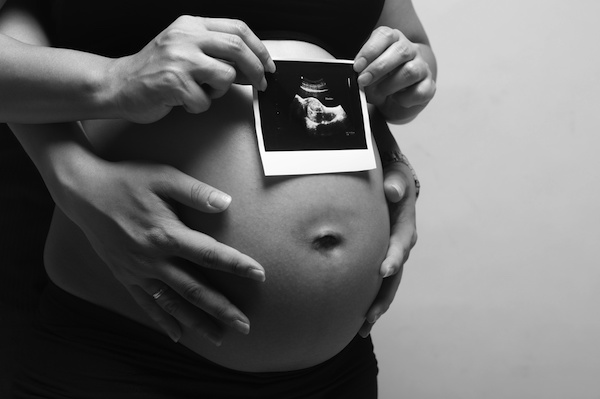
TUESDAY, April 7, 2015 (HealthDay News) — The use of long-acting, reversible forms of contraception remains low among sexually active teen girls, though that trend seems to be changing, according to a U.S. government report released Tuesday.
Among teens aged 15 to 19, the use of long-acting reversible contraception rose from less than 1 percent in 2005 to about 7 percent in 2013, according to the federal Centers for Disease Control and Prevention.
“We encourage teens who aren’t sexually active to continue to wait, but for teens who are choosing to have sex, we want them to make an informed choice,” Ileana Arias, the CDC’s principal deputy director, said during a media briefing.
“We want them to think about the most effective types of birth control, and ask their doctor or family planning counselor about long-acting reversible contraception as well as about other options,” she said.
Long-acting reversible forms of birth control include intrauterine devices (IUDs) and hormonal implants. These forms of birth control are extremely effective, with less than 1 percent of users getting pregnant during the first year of use, according to the CDC.
The report was published online April 7 in the CDC’s Morbidity and Mortality Weekly Report.
Teen births continue to decline in the United States, even reaching an all-time low in 2013, according to the CDC. Nearly 90 percent of teens said they used birth control the last time they had sex.
Still, more than 273,000 babies were born to U.S. teens in 2013. And, the teen birth rate in the United States is up to seven times higher than some other developed countries, the CDC said.
Most teens choose condoms or birth control pills as their preferred method of contraception, according to the CDC. But, if not used consistently and correctly, these methods are less effective for preventing pregnancy than implants and IUDs, the experts said.
Implants and IUDs are the most effective type of reversible birth control because they don’t require taking a pill every day or putting on a condom consistently before sex. Depending on the type of implant or IUD, they can be used for three to 10 years and they’re safe, the CDC researchers added.
Arias did point out that, used alone, these methods do not protect against a sexually transmitted infection, including HIV. Condoms as an added precaution is the best way to prevent these infections, she said.
Most teens don’t know a lot about implants and IUDs, and some think they can’t use them because they are too young, according to the report.
In addition, doctors face barriers to providing these contraceptives to teens. Those barriers include high costs and worries about whether implants and IUDs are safe and appropriate for teens. And, not all doctors are well-trained in inserting and removing these devices, the CDC said.
Dr. Vanessa Cullins, vice president for external medical affairs at Planned Parenthood Federation of America, agreed that implants and IUDs are the most effective form of contraception.
But, she added, there are some obstacles for teenage girls looking to get these devices, including cost.
Teens can get these devices through health insurance, but that can be problematic for those who don’t want their parents to find out, Cullins said. “High upfront cost can make it prohibitive for teens who are trying to pay for it out-of-pocket,” she said. “The problem with insurance is, if the teen is on the parent’s insurance, then the parent will find out about the placement of the IUD or implant.
“This is one of the reasons why we think it is so very important for parents and teens to talk to each other, and for parents to recognize the importance of making sure that their teens are protected against STDs [sexually transmitted diseases] and against pregnancy,” she said.
The new CDC report included data on 7.5 million females aged 15 to 19 who sought contraception advice from federally funded family planning centers. At such centers, much of the cost of implants and IUDs is covered, the report noted. In addition, birth control is funded under expanded Medicaid and is fully paid for under the Affordable Care Act, Arias said.
Other findings in the report include:
- Implants accounted for more of the increase in long-term, reversible contraception than IUDs did.
- Use of these contraceptives in 2013 was highest in Colorado (26 percent) and lowest in Mississippi (0.7 percent). The rest of the states ranged from 1 percent to 20 percent.
Groups such as the American College of Obstetricians and Gynecologists (ACOG) and the American Academy of Pediatrics recommend long-acting reversible contraception as a first-line contraceptive choice for teens, Arias said.
An ACOG representative concurred.
“Long-acting reversible contraceptive methods — including intrauterine devices and implants — are the most effective forms of reversible contraception available and are safe for use by almost all reproductive-age women,” Dr. Hal Lawrence, chief executive officer and executive vice president of ACOG, said in a prepared statement.
He added that research has shown these forms of birth control are just as safe and as effective when used by teens, which is why ACOG recommends their use by adolescents.
“We firmly believe that increased adoption of these methods can play a role in reducing unintended pregnancy,” Lawrence added.
More information
For more on long-acting reversible contraception, visit the American College of Obstetricians and Gynecologists.
Copyright © 2025 HealthDay. All rights reserved.

